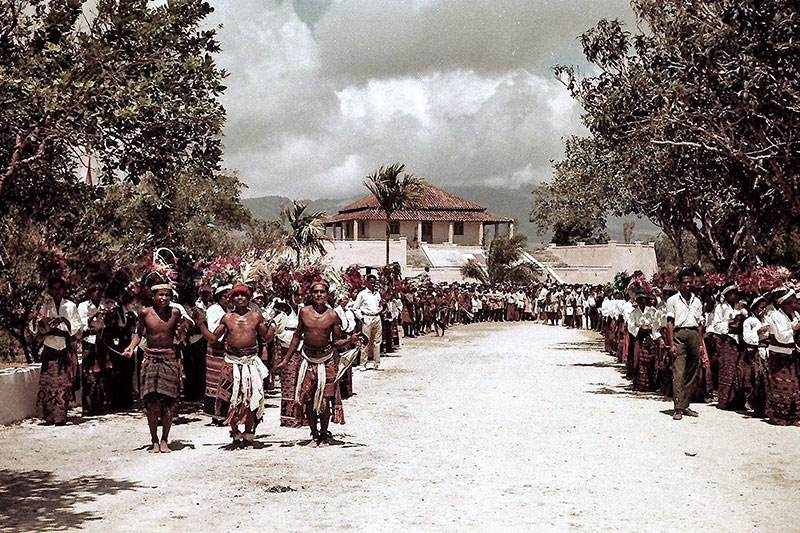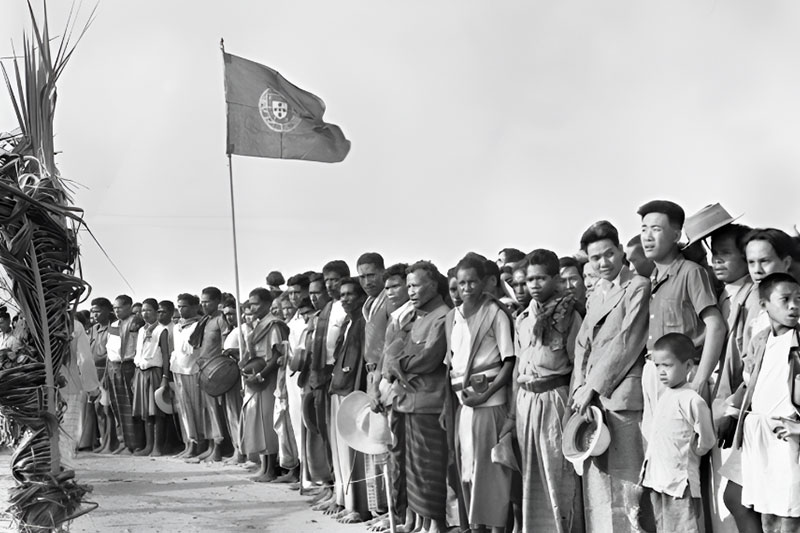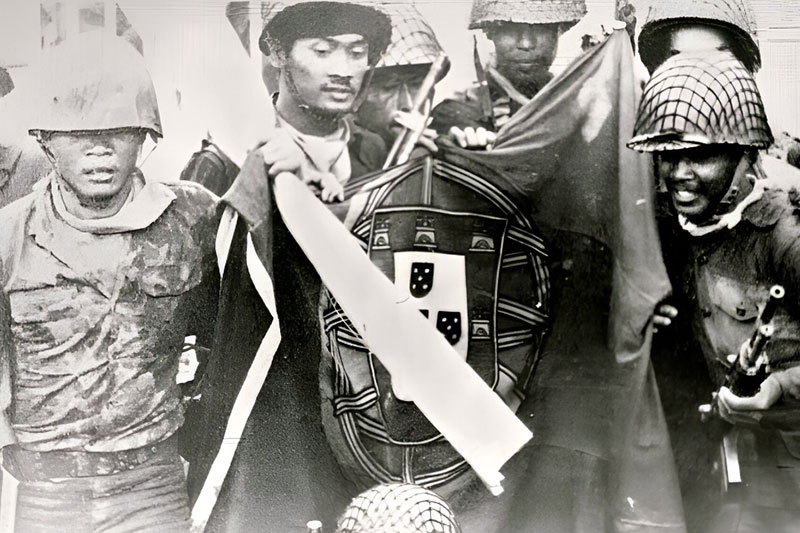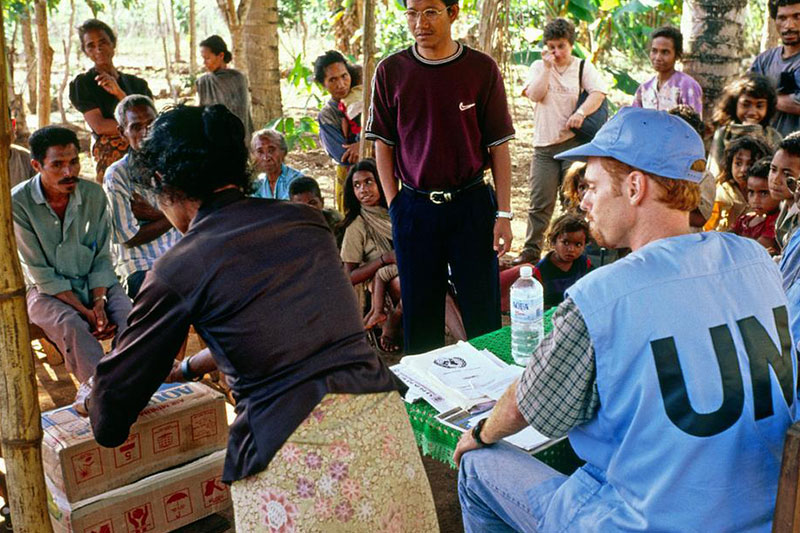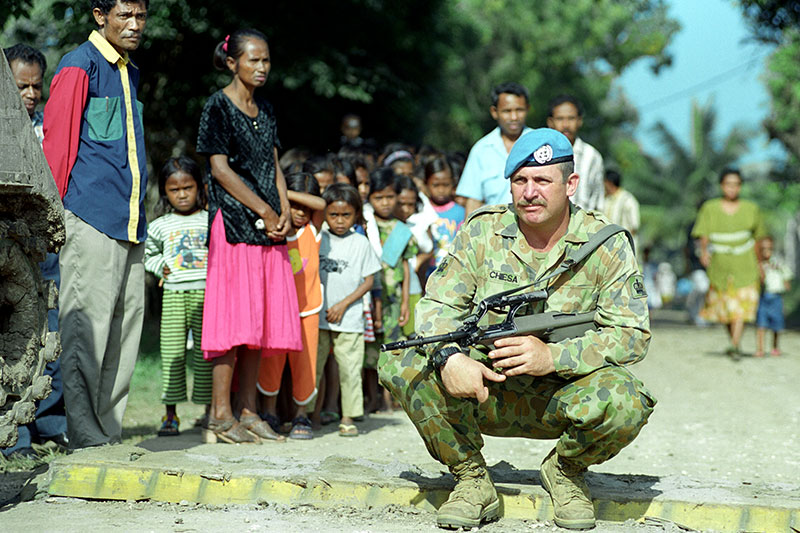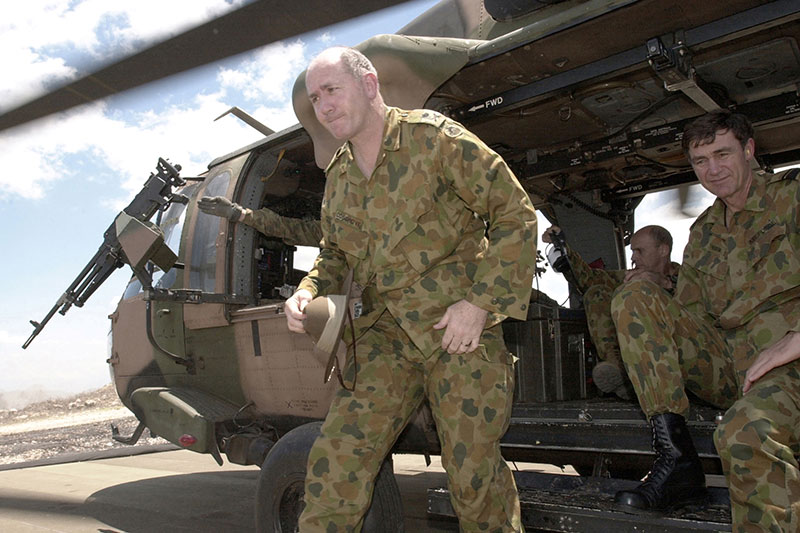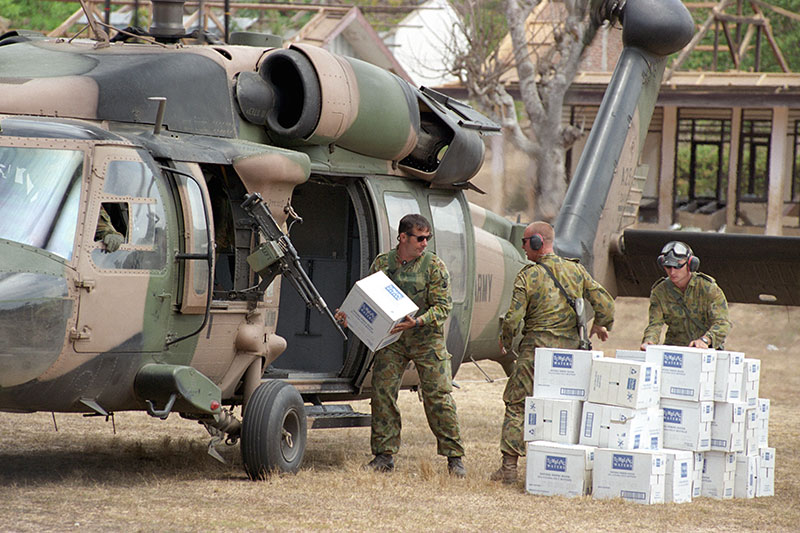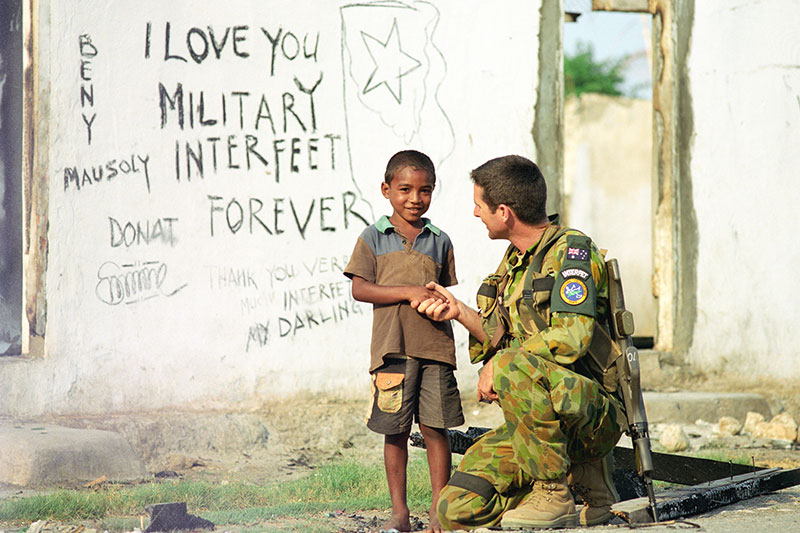2 September 2024
INTERFET: The making of peace in East Timor
Conflict in East Timor
Timor-Leste (formerly East Timor) is a Southeast Asian country located approximately 500km north of Darwin. The country’s history of conflict can be traced back to European settlement on Timor during the 16th and 17th centuries.
Portuguese and Dutch settlers fought for Timor’s control until the island was divided by treaty in 1859. From then on, the Dutch claimed control of West Timor, and the Portuguese claimed control of East Timor.
Dancers in Portuguese Timor in 1966
Almost a century later, the Allied forces of World War II landed on Timor to reinforce the island against potential Japanese invasion. These troops were mostly Australian and Dutch, and their presence on the island became known as ‘Sparrow Force’.
Just one day after the bombing of Darwin in 1942, the Japanese invaded Timor. Fighting ensued for four days in West Timor before the Allies were forced to surrender.
Following Japanese occupation, Australian forces began guerrilla warfare operations in East Timor, aided by the Timorese. These troops were withdrawn in 1943 and while Portugal regained control of East Timor after the war, the Dutch were unable to reclaim West Timor. Consequently, West Timor became part of Indonesia in 1949.
Locals in Portuguese Timor welcome a small party of Australian soldiers, led by Brigadier Dyke DSO, Commander of Timor Force in 1945.
In 1974, Portugal’s Carnation Revolution led to mass decolonisation of former Portuguese territories – including East Timor. A brief civil war began in August 1975, during which time Indonesian forces conducted destabilisation operations across the West Timor border that resulted in five Australian journalists being killed in Balibo on 16 October 1975.
The following month, rival revolutionary factions fought for control of East Timor and, on 28 November 1975, FRETILIN (Frente Revolucionária do Timor-Leste Independente) declared independence from Portugal.
Nine days later, Indonesia invaded East Timor under the pretext of combating communism, killing a sixth Australian journalist and numerous other prisoners on the Dili waterfront. This began a 24-year occupation of the country marked by widespread death, destruction and displacement.
Indonesian soldiers pose with a captured Portuguese flag in Batugade, East Timor in November 1975.
The origins of INTERFET
Indonesia’s occupation of East Timor gave rise to an independence movement that gained momentum following three occurrences: the award of the 1996 Nobel Peace Prize to two East Timorese, the 1997 Asian financial crisis, and the 1998 fall of Indonesian President Suharto.
As a result, Indonesia and Portugal signed an agreement in 1999 to allow East Timor to vote for its independence, leading to a UN-supervised referendum in August that year. Against Indonesia’s expectations, the referendum result was overwhelming, with 78.5% of Timorese voting for independence.
Image: UN | United Nations election workers in East Timor in 1999.
In response, pro-Indonesian militias and security forces waged a widespread campaign of destruction and violence against East Timorese civilians.
Shortly after the referendum, East Timor was in a state of crisis. About 1,400 people were killed, 500,000 people were displaced and 70% of infrastructure was destroyed.
This widespread devastation outraged the international community. Under mounting pressure, Indonesia agreed to withdraw from East Timor to allow a UN-authorised multinational peacemaking force to enter.
Image: Defence Australia | An Australian solider in East Timor
As a result, the International Force East Timor (INTERFET) was formed in September 1999 to restore peace and security to the region, and to facilitate humanitarian assistance operations.
Under the command of Major General Peter Cosgrove, INTERFET became the first major international coalition to be organised and led by Australia. For its five months of operation, more than 11,500 personnel from 22 countries – including more than 5,500 Australians – served in the region. The Australian Army, Navy, and Air Force all contributed to operations in East Timor during this time.
Image: Defence Australia | Peter Cosgrove in East Timor
INTERFET troops worked swiftly to airdrop food and medicine, protect humanitarian workers and secure key areas on the island. Having fulfilled its purpose, INTERFET handed military operations over to the United Nations Transitional Administration in East Timor (UNTAET) in February 2000. Australia supported UNTAET’s peacekeeping operations until the country regained its independence as Timor-Leste in 2002. Australia’s military support in Timor-Leste continued as part of the United Nations Mission of Support in East Timor (UNMISET), United Nations Office in Timor-Leste (UNOTIL) and International Stabilisation Force (ISF) until March 2013. The country has had relative peace in the years since.
Image: Defence Australia | Australian soldiers unload fresh water from an Army Blackhawk Helicopter.
Australia’s legacy
To this day, INTERFET remains the largest of Australia’s peacemaking and peacekeeping missions, and Australia’s largest overseas military deployment since the Vietnam War.
Approximately 18,800 Australian military and police personnel – and additional civilians – served in Timor-Leste as part of the various operations that spanned from 1999 to 2013.
Tragically, six Australians lost their lives while deployed – or as a result of their service – in Timor-Leste, while a number were injured during their deployment.
Image: Defence Australia | Army Sergeant Martin Ryan shakes hand with an East Timorese child.
25th anniversary of Australian service in Timor-Leste
20 September 2024 marks the 25th anniversary of INTERFET’s deployment to Timor-Leste.
Join us in honouring all Australians who served in Timor-Leste, and the sacrifice of their families.

